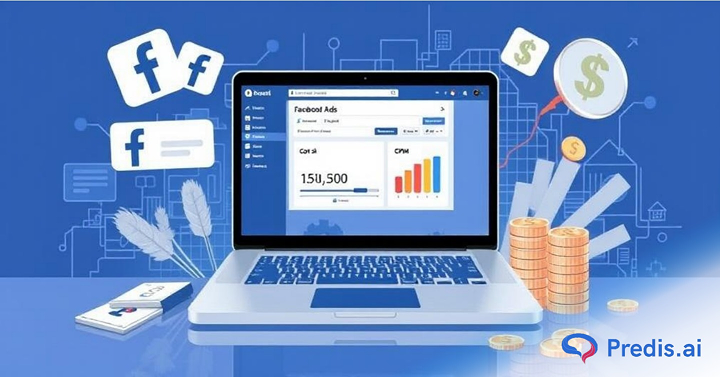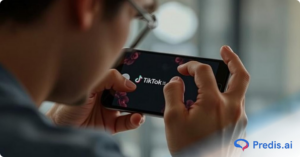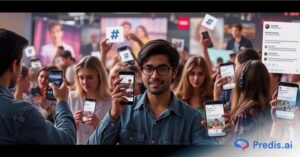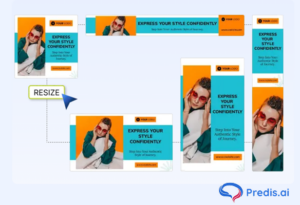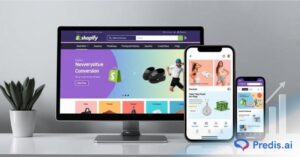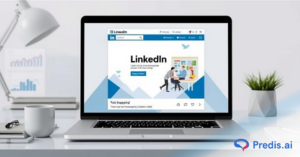With over 3 billion Facebook users globally, 89% of marketers today use this platform as part of their digital marketing efforts. However, how much does Facebook advertising cost to reach your target audience? This answer differs depending on several factors.
Business owners looking to upscale growth by marketing on Facebook must be aware of a detailed breakdown of costs attached to advertising on Facebook. Even though these ads work amazingly for your business, the costs you bear to achieve this might be way overboard or cause you to misallocate your budget.
This blog post is going to focus on the various aspects of Facebook ads’ pricing to show you how managing your advertising expenses can be done effectively. You will also learn about the ways to optimize and control costs wherever possible.
Factors Influencing Facebook Ads Cost
Facebook ads do not cost a fixed amount of money but vary depending on different circumstances. Therefore, understanding these elements may help you create better strategic plans for your ads. The following are some key factors that affect the cost of ads on Facebook:
1. Bidding Strategy
Facebook ads work on an auction model in which advertisers determine how much they want to pay for their ad placement. The three basic bidding strategies for Facebook ads are:
- Cost Per Click (CPC): This bidding strategy charges you for every ad click that redirects the user to a landing page. Use this option whenever you want people to visit your site since it helps you get more visitors. By choosing CPC, you will be able to focus on those customers who are more likely to follow your site`s direct link or purchase.
- Cost Per Mille (CPM): For every 1000 users that view your ad, the CPM strategy charges a certain fee. If you want to quickly reach a large audience, this is the best approach to choose.
- Cost Per Action (CPA): It is a payment model in which you are charged solely for particular user actions, such as signing up or making a purchase. This strategy is extremely effective for generating leads or making sales.
Choosing the appropriate bidding strategy can greatly influence your overall advertising expenses. For instance, opting for CPM could be a more economical choice for brand awareness campaigns, whereas CPC is typically preferred for generating immediate traffic.
2. Target Audience
Your target audience determines ad costs. Facebook enables you to focus on users who have certain interests, behaviors, and other characteristics. Ad costs can differ based on the specificity of your target audience. This is because highly explicit audiences cost more due to competition.
Follow these steps to set up your target audience on Facebook Ads Manager:
- Open Facebook Ads Manager.
- Click on “Create” to start a new campaign.
- Choose your campaign objective.
- In the “Audience” section, you should be able to specify your target audience.
- Choose from factors like location, age, gender, and language.
- Select detailed targeting options like interests and behaviors.
It is important to choose the right target audience who would be interested in your products and services. This will drive more sales and conversions while minimizing costs.
To make this process even more efficient, you can use Predis.ai to generate engaging visual content tailored to your audience’s preferences. You can also check out some amazing Facebook Ad examples to seek inspiration for your next campaign.
3. Ad Placement
Facebook offers different ad placements such as Facebook feed, Instagram feed, Stories, and Audience Network. Each placement has its cost dynamics, and choosing the right one can optimize your ad spend.
Automatic ad placements can also be efficient in terms of cost because Facebook optimizes ad delivery across different placements. It means that Facebook’s algorithm will place ads wherever it thinks they have a good chance of doing well.
4. Ad Quality and Relevance Score
Facebook offers a relevance score based on the response of your audience to your ads. You will usually see improvements in performance and reduced costs if the relevance score is high.
To improve your ad quality:
- Use high-quality images and videos. They catch attention, hence leading to increased user involvement. Tools like Predis.ai can help you create these high-quality visuals effortlessly.
- Write ad messages that are engaging and clear because they’ll be brief yet fascinating, too.
- Test diverse types of ads, including carousel, video, and other image placements, to see which ones work best for your audience.
An ad with a high relevance score might cost 50% less than one whose relevance has been rated as being low. This would not only lower the prices for such advertising campaigns but, at the same time, guarantee higher levels of engagement among customers targeted, thus making them more impactful.
A high relevance score not only makes your ads cheaper but also ensures that they reach a more engaged audience, thus improving your campaign’s effectiveness.
Transform your marketing with Predis.ai's Facebook Video Ad Maker—create stunning video ads that captivate and convert!
5. Seasonality and Competition
Ad costs can fluctuate based on the time of year and the level of competition. For example, during holiday seasons or major sales events, more businesses advertise, leading to higher costs.
During the holiday season, the average CPC went up by 19% compared to the rest of the year in Q4 2023. This was due to higher competition among advertisers scrambling for holiday shoppers.
Don’t plan campaigns when competition is high, as it would be expensive. Remaining informed about what your competitors are doing can help you allocate your budget accordingly.
Setting a Budget for Facebook Ads

Creating an explicit budget is a crucial aspect of managing your advertisement costs efficiently. To determine which one suits your campaign requirements best, let us consider various budget types.
1. Daily vs. Lifetime Budget
Facebook allows you to set either a daily budget or a lifetime budget for your campaigns. Let’s understand both options to help you choose the right option for your needs:
- Daily Budget: It is suitable for ongoing marketing projects where you want to spend a set amount each day. This option allows for an even ad distribution and ensures consistent visibility.
- Lifetime Budget: It is ideal for campaigns with a fixed end date. Facebook will pace your spending over the campaign duration, ensuring that your budget lasts throughout the specified period.
To set your budget:
Step 1: Go to the Budget & Schedule section in your ad set.
Step 2: Select Daily Budget or Lifetime Budget.
Step 3: Input the desired expenditure amount.
By choosing the right type of budget, you can align ad spending with your campaign objectives, ensuring you don’t exhaust your finances prematurely.
2. Bid Cap and Cost Control
You can control your spending by setting bid caps and cost controls. This step is rather important to follow so you don’t overspend while also earning profit.
- Bid Cap: This determines the highest amount you are willing to spend on ad placements. It ensures that your advertising costs remain in check.
- Cost Control: It allows you to set a target cost for actions, helping you keep your spending within limits and ensuring that you’re not paying more than what’s profitable for your business.
You can get the most out of your Facebook marketing campaign and maximize online sales without exceeding your budget.
Now, let’s consider the need to actively monitor your ad performance for wider outreach and effectiveness while reducing costs.
Measuring and Optimizing Your Facebook Ads Cost
Improving ROI with data-driven decisions and reliable ad performance metrics is an art in itself. Check out these key metrics and strategies you must implement to boost the outreach and effectiveness of Facebook ads:
1. Analyzing Performance Metrics
Facebook provides detailed analytics to measure ad performance. Key metrics to monitor include:
- Cost Per Click (CPC): Fee you incur for every click on your advertisement.
- Click-Through Rate (CTR): Proportion of users who clicked on your ad after viewing it.
- Conversion Rate: Percentage of clicks that lead to a specific action, like a sale or registration.
- Return on Ad Spend (ROAS): The revenue generated for every dollar spent on ads.
If you frequently evaluate these metrics, you will know what is effective and identify where you should make changes. This way, high-performance ads will receive more money, whereas low-performance ads will either be stopped or improved. To learn more about performance metrics such as ROAS, visit Predis.ai.
2. A/B Testing
Running multiple versions of your ad to ascertain which performs best involves A/B testing. Trying out different headlines, images, or audience segments in the advertisements enables you to cut costs and make them more efficient.
Here’s how you can achieve this:
- Create two or more versions of your ad with slight variations.
- Run these ads simultaneously to the same audience.
- Track the ad performance data to determine the better-performing version.
Performing A/B tests on advertisements and other promotional campaigns will help you better your results while maximizing your returns.
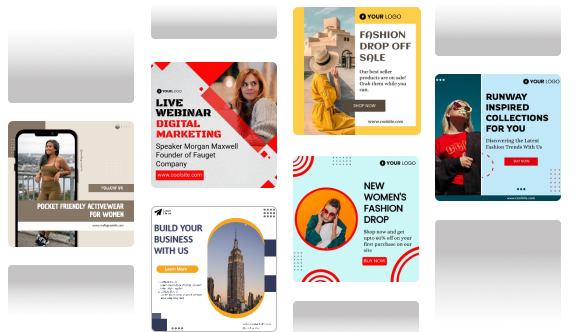
Common Mistakes to Avoid
Despite having a successful approach, typical mistakes could prevent your Facebook ads from delivering their maximum ROI. Being aware of these traps can help prevent them and ensure the campaign runs smoothly.
1. Ignoring Ad Frequency
Having a high frequency of advertisements may bring about ad burnout among users, who could develop a tendency to disregard your featured ads. This can result in lower engagement rates and higher costs. To manage ad frequency:
- Monitor your ad frequency regularly.
- Refresh your ad creatives periodically.
- Use frequency capping to restrict the number of times your ad is displayed to the same user.
Create professional-grade Facebook ads with ease using Predis.ai’s Facebook Ad Maker—enhance your social media strategy! Turn your ideas into creative ads.
2. Overlooking Mobile Optimization
A big chunk of users log into Facebook through mobile devices. Creating phone-friendly ads is crucial to boosting their outreach and engagement.
This is how you make your ads optimized for mobile:
- Use vertical or square images/videos. These formats perform better on mobile screens.
- Avoid making your advertisement overly long. People who use mobile devices prefer brief and direct messages.
- Test your mobile landing pages by using them on different mobile devices. Ensure that they are easy to navigate and load swiftly.
The user experience after clicking is not only about the ad but also mobile optimization. Landing pages that are mobile-friendly can increase conversion rates by a wide margin.
3. Neglecting Landing Pages
Your landing page is crucial for conversions. Make sure it’s optimized for user experience and matches the message in your ad to ensure a smooth transition.
- Consistency: Make sure that the concepts and offers provided in ads are identical to those on your landing page.
- Speed: Improve the speed of your website’s landing pages so that customers will not exit before seeing it.
- Clarity: Ensure that your call-to-action is easy to understand.
A well-optimized landing page can increase the impact of your Facebook ads substantially when it comes to driving conversions. It achieves this by simplifying the site navigation experience, thus increasing their likelihood of making a purchase.
Conclusion
Understanding what you will pay for Facebook ads is determined by several factors, including bidding strategies and audience targeting. You can optimize your ad expenditure and achieve better results by setting aside a defined budget, continuously tracking ad performance metrics, and avoiding typical mistakes.
Always remember to monitor your advertisements and adapt your marketing accordingly. This will guarantee better outcomes for your investment and prevent you from overspending or misallocating your budget.
If you are searching for a tool to assist you in creating amazing visual content for your Facebook ads, then give Predis.ai a try. It uses AI technology, enabling users of all experience levels to create visually captivating content within no time. Delay no further, and sign up today!
Related Content,


